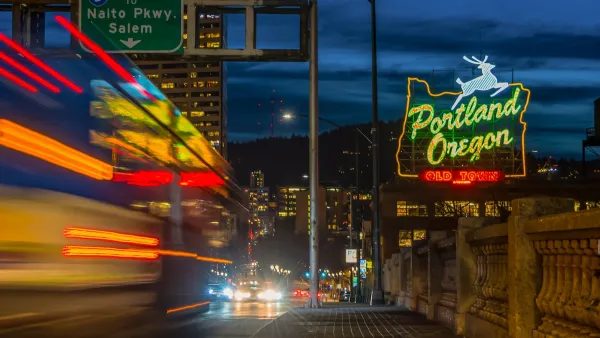Hillary Clinton recently proposed the creation of a national infrastructure bank—an idea also put forward several times by the Obama Administration. Posts by Vox and City Observatory put the idea under a microscope.
Matthew Yglesias (writing for Vox) and Joe Cortright (writing for City Observatory take different approaches to their analysis of an infrastructure policy that would rely on a national infrastructure bank for some of its funding capability.
Yglesias mostly provides an explanation of the concept by way of a larger infrastructure platform proposed by presidential candidate Hillary Clinton a few weeks ago.
After pointing out a few of the way infrastructure bank proposals can differ, Yglesias notes a common characteristic of all of them: "All flavors of infrastructure bank, however, are designed to solve a fundamental mismatch between which kinds of investors want to buy municipal bonds and which kinds of investors are best suited to invest in projects whose payoffs are very long-term."
As for "Clinton's particular flavor of infrastructure bank," according to Yglesias, it "would focus on projects of regional and national significance, emphasizing investments in complex multi-modal projects like freight and port improvements, and in projects to modernize our energy, water, broadband, and transportation systems in urban and rural communities."
Cortright, however, provides a clear polemic about the shortcomings of the national infrastructure bank model. Cortight's argument, summed up generally, is that there are several practical considerations that will limit the effectiveness of the infrastructure bank. Cortright goes into a lot more depth on each of the considerations listed here:
- A bank has to be capitalized.
- Banks want to be paid back.
- A bank may mostly substitute for existing financing rather than prompting additional investment.
- Banks don’t design projects, DOTs do.
- Cheap money creates its own incentive problems.
- And it’s not like states haven’t figured out how to borrow money.
Cortright concludes his argument by following up on that last point—most states are already deeply in debt for large infrastructure projects.
FULL STORY: Don’t bank on it

Analysis: Cybertruck Fatality Rate Far Exceeds That of Ford Pinto
The Tesla Cybertruck was recalled seven times last year.

National Parks Layoffs Will Cause Communities to Lose Billions
Thousands of essential park workers were laid off this week, just before the busy spring break season.

Retro-silient?: America’s First “Eco-burb,” The Woodlands Turns 50
A master-planned community north of Houston offers lessons on green infrastructure and resilient design, but falls short of its founder’s lofty affordability and walkability goals.

Test News Post 1
This is a summary

Analysis: Cybertruck Fatality Rate Far Exceeds That of Ford Pinto
The Tesla Cybertruck was recalled seven times last year.

Test News Headline 46
Test for the image on the front page.
Urban Design for Planners 1: Software Tools
This six-course series explores essential urban design concepts using open source software and equips planners with the tools they need to participate fully in the urban design process.
Planning for Universal Design
Learn the tools for implementing Universal Design in planning regulations.
EMC Planning Group, Inc.
Planetizen
Planetizen
Mpact (formerly Rail~Volution)
Great Falls Development Authority, Inc.
HUDs Office of Policy Development and Research
NYU Wagner Graduate School of Public Service




























